Since he launched his design and boatbuilding career in 1981, Eric Hvalsoe has been seeking “the Holy Grail of traditional small craft design”: a boat that rows and sails equally well within the limitations of its length.
It took him 20 years and several variations on the theme, but he may well have found it in the Hvalsoe 16. This plank-on-frame lapstrake dinghy, first produced in 2001 by Eric’s company, Hvalsoe Boats in Shoreline, Washington, receives rave reviews both from owners who row it exclusively as well as from those who love to sail it—even as its designer and builder considers it “the great compromise” because of the choices he made to ensure the viability of both modes.
“For my uses, it’s the perfect boat,” says owner Michael King of Seattle, who purchased his Hvalsoe 16 in 2003 for the purpose of rowing on Puget Sound. Owner Denis Norton opts for the same adjective in calling his 2007 Hvalsoe 16 “just perfect” for sailing the glacial lakes of central Idaho. High praise indeed for a “compromise” boat.
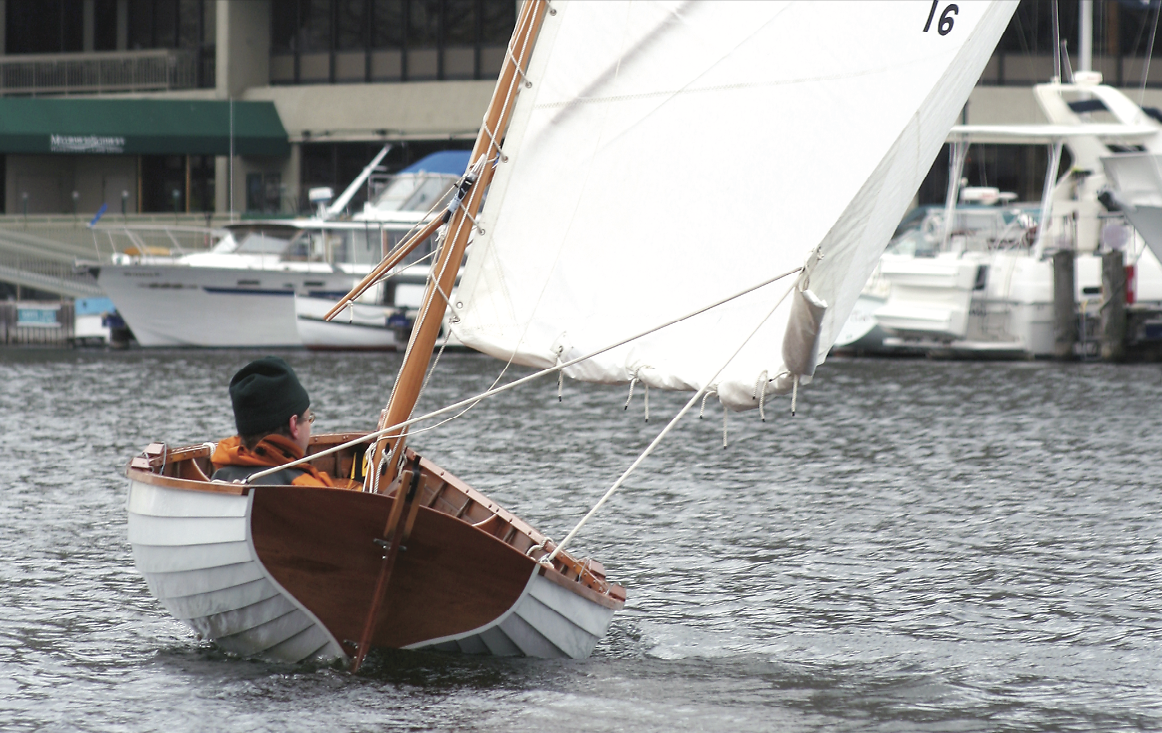 Photo by Shelly Randall
Photo by Shelly RandallAlthough its construction is substantially different from the classic Whitehall pulling boat, representing as it does a compromise between good rowing and sailing performance, the Hvalsoe 16 is squarely in the tradition of the historical type.
The genesis of the Hvalsoe 16 was the Hvalsoe 13, designed in the early 1980s, which Seattle reviewer Chas. Dowd described thus: “Narrow at entry and run for easy rowing but with healthy ’midship sections for sailing stability, the design worked even better than anyone had a right to expect.”
I’d say the same of the Hvalsoe 16—it surpassed my expectations.
Its shippy appearance, however, would lead anyone to expect the best. With its raked stem, graceful sheerline, and heart-shaped transom, “it always gets compliments,” according to Michael. Subtle details, like the convex curvature of the floating breasthook mirroring the curve of the transom, convey the designer and builder’s aesthetics and attention to detail.
And it’s truly a Pacific Northwest boat, having been informed by and designed for Northwest waters by a man who himself was born, raised, and educated in Washington state.
Inspired by the Whitehall type, among others, but designed for a client who wanted “something other than a Whitehall” for both rowing and sailing, the Hvalsoe series was developed with a generous beam, a strong mid-section, and a high, soft bilge. The hulls are slender but with good buoyancy. “I don’t want to say it’s lightly built, but it’s efficiently built,” says Eric of the Hvalsoe 16. “It’s a fast boat. Compared to a heavier boat, it accelerates well and feels pretty sporty.”
The Hvalsoe 16 handles nicely under sail with three adults, or two adults and two children, and under oar power with one to four adults (it has two rowing stations). Two strong people can carry it, but it helps to have four people for a longer carry.
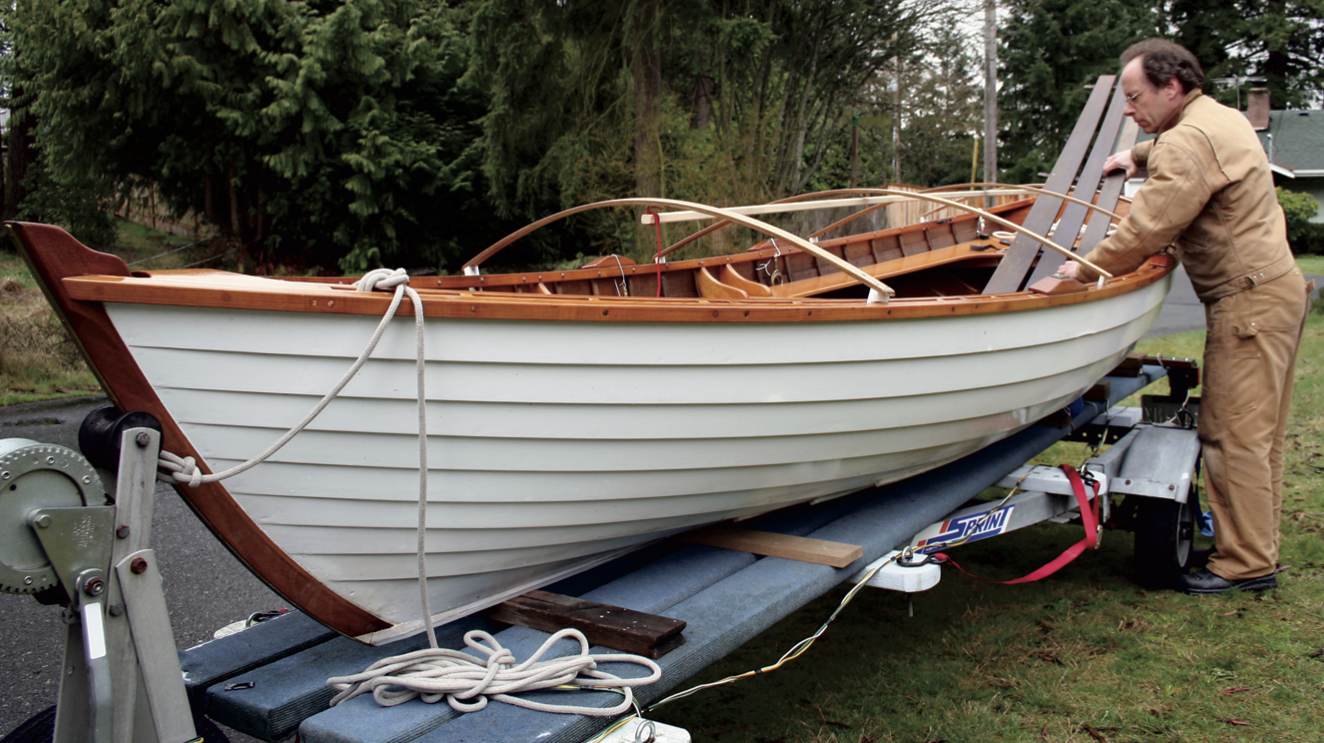 Photo by Shelly Randall
Photo by Shelly RandallA plank keel makes the boat not only a fine one for beach landings but also for hauling by trailer to the next destination.
The Hvalsoe 16 is actually 15′ 9″ long with a 4′ 6″ beam and a minimum draft of 1′ 6″. It weighs 185 lbs with the centerboard and trunk, and carries an 85-sq-ft spritsail. For comparison, the Hvalsoe 13 is truly 13′ in length, but the beam and draft are the same as the 16’s. It weighs 155 lbs and the spritsail is 65 sq ft. “Either of these boats is a capable near-shore boat within the confines of common sense,” says Eric.
The Hvalsoe boats are available in several sizes. “The development of the 16 from the 13 was an evolution by experience and eye, which included an intermediate stage, the 15,” Eric explains. He simply stretched the 13 to get the 15, using the same sections spaced farther apart, but then felt the hull could use more buoyancy in the stern, so he redrew the body plan by eye to get the 16. However, the midsection of all three boats is the same. He is now considering adding an 18′ or 19′ version.
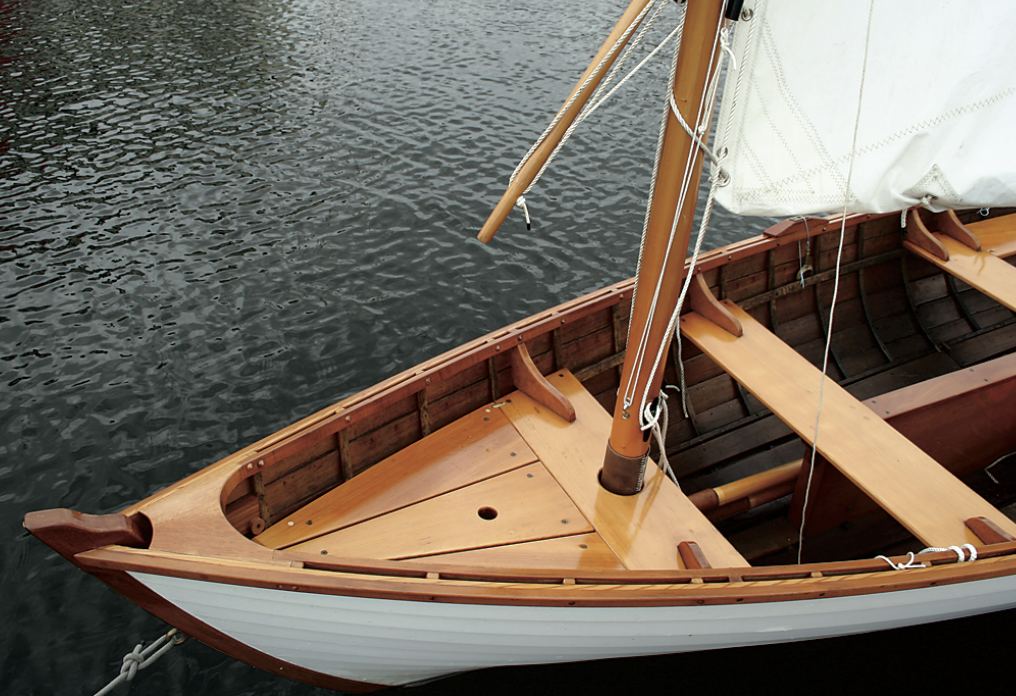 Photo by Shelly Randall
Photo by Shelly RandallA foredeck provides a bit of stowage underneath.
Eric builds these boats with 3⁄8″ Western red cedar planking over white oak bent frames. The stem, transom, centerboard trunk, and knees are mahogany; the keel and riveted rubrails are also hardwood. All fastenings are copper and bronze, with the exception of stainless steel hardware for the pop-out rudder.
The Hvalsoe 16 would be an ambitious project for an experienced amateur boatbuilder, but construction and sail plans are available. All Hvalsoe plans require lofting. Those who would prefer to commission Hvalsoe Boats to construct a boat—starting at $24,000 fully finished and rigged—would be hard-pressed to find better craftsmanship.
Eric recently had the opportunity to buy back Hvalsoe 16 hull No. 1 from a former client. It’s the first boat this career boatbuilder—who turned 50 this year—has ever actually owned, and it’s the one I tested on Seattle’s Lake Union.
We launched from a dock at The Center for Wooden Boats, but Eric tells me the Hvalsoe boats will stand upright on the beach with their wide plank keel. We took some time to talk about the hull, which is protected with tough UHMW (ultra high molecular weight) plastic grounding shoes on the keel and skeg and rubbing strips on the first three laps. Eric meticulously finishes the hull interior with SeaFin Teak Oil and then covers all the brightwork with a urethane coating. To further enhance longevity, he offers a custom all-weather boat cover stretched over laminated arch supports. He’ll also supply a galvanized marine trailer with carpeted supports and tie-offs of his own design.
“When he gets done with it, it’s a custom trailer for the boat,” says Michael, who tows his Hvalsoe 16 with his Volkswagen Vanagon, assuring me that the van “doesn’t suffer at all” with the light boat and minimalist trailer. “It’s really easy to launch and to put back on the trailer. It’s no effort, really.”
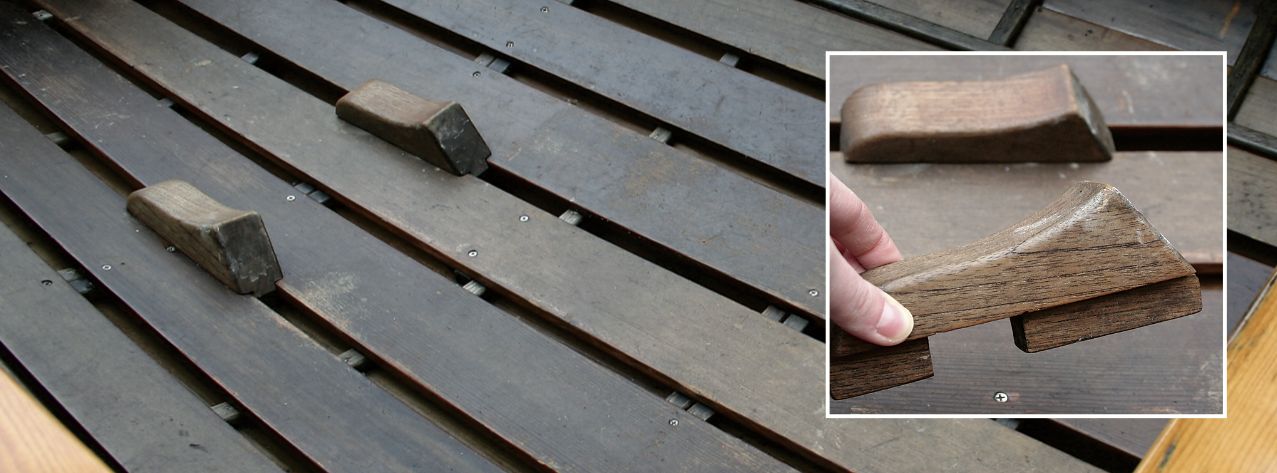 Photo by Shelly Randall
Photo by Shelly RandallSimple footrests give the oarsman a better chance to row hard without slipping off the thwart.
I was intrigued by the adjustable and removable individual foot stretchers that Eric designed to catch a frame and fit between the floorboard planks. Having suffered many barely passable foot stretchers in fixed-seat rowing boats, I found they were just about the handiest thing I had ever seen. They provided comfortable braces for my feet when rowing and popped out and out of the way for sailing.
Unfortunately, the weather on our trial day was not comfortable, but at least the gray and gusty March day provided a good test of the Hvalsoe 16’s capabilities. Eric wisely reefed the loose-footed spritsail, and as we headed out onto the lake, I was immediately taken with the boat’s stability. The tiller was responsive in the big puffs, and when we heeled, there was ample freeboard. I found it most comfortable to sit low, on a cushion on the floorboards as opposed to the thwarts. Eric had dipped the rail earlier that day, but there was only a little water in the bilge, and the raised floorboards kept my seat dry. On the light-air edges of the lake, we roll-tacked, and Eric showed me how he lets go of the tiller during a tack to concentrate on the sheet. The rig is so well balanced that the rudder recenters itself on a close-hauled point of sail. Eric sometimes “cleats” the sheet between his knees, and I noticed why: the line doesn’t always run smoothly in the vertical cleat on the aft face of the centerboard trunk. But overall, the galloping sail was exhilarating and I could imagine how the boat with its full sail area would move satisfyingly in a light, steady breeze.
When it came time to row, the Hvalsoe 16 converted from a sailing to a rowing boat in minutes. We returned to the dock, used the brailing line to collapse the sail against the mast, and effortlessly unshipped the unstayed mast, which is made of lightweight Sitka spruce. One per- son standing on the dock can easily lift out the mast, sail, and spar bundle. These fit entirely within the boat if necessary, but I left them on the dock. Then out came the oars, also made of Sitka spruce. Rowed solo from the center thwart, the Hvalsoe 16 was light and responsive and had a tight turning radius. I followed Eric’s advice and dropped the centerboard a couple of inches. She was tracking beautifully, even in a crosswind, until I experimented briefly with raising the centerboard. I was rowing into a strong wind at the time and the bow was blown off immediately. After a minute of struggling to regain my course, back down went the centerboard, and rock-solid stability returned.
 Photo by Shelly Randall
Photo by Shelly RandallA simple, boomless sprit rig allows the sail and sprit to be easily brailed up and lashed around the mast while at the dock or while rowing through a calm.
If you’re in the Seattle area, you can get a feel for Eric’s designs by visiting The Center for Wooden Boats on south Lake Union. The livery has a donated Hvalsoe 13 and a student-built Hvalsoe 15 available for rental. If you have more time, you can take one of Eric’s traditional plank-on-frame lapstrake courses offered at the center. Recent classes have participated in lofting, framing and planking a Hvalsoe 16.
“I like being in the increasingly unique position of a traditional plank-on-frame builder,” Eric says. “I don’t seem to be strongly motivated to design or build simpler projects, or make lapstrake ‘easier’ by going to plywood for the home builder—not that there is anything wrong with that. Given time, I imagine I would develop some simpler models, but…time is what it is.”
In recent years he has had more customer interest in the Hvalsoe 16 than in the 13, but he continues to build both and delight his clients by presenting them with “the Holy Grail” many of them have also long sought.
“It’s just an amazing boat,” says Michael. “I’m always reminded when I get out on the water how good a boat it is.” He pauses, reflecting on his two young children, in whom he hopes to instill a love of both rowing and sailing. “This is a boat that will be inherited,” he says finally. ![]()
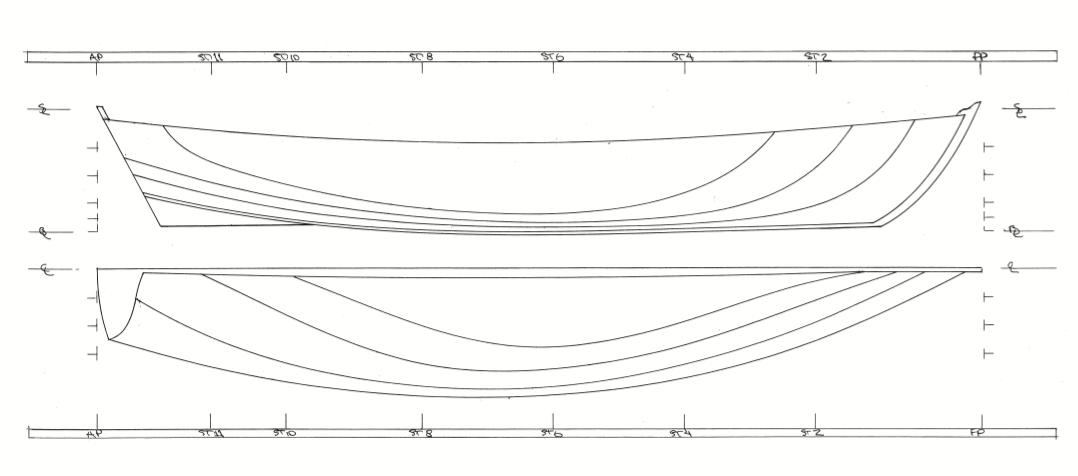
Blending good characteristics for both rowing and sailing, the Hvalsoe 16 has a fine entry at the bow, a comparatively flat bottom for upright beaching, and weighs only 185 lbs.
This Boat Profile was published in Small Boats 2009 — for more information, visit Hvalsoe Boats or contact Eric at [email protected] or (206) 533-9138.
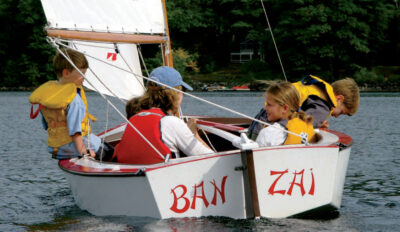
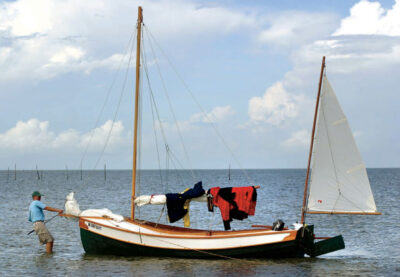
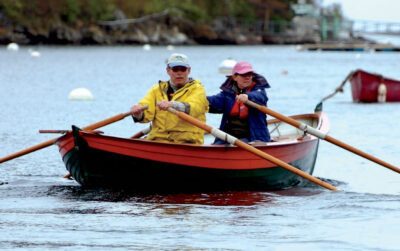
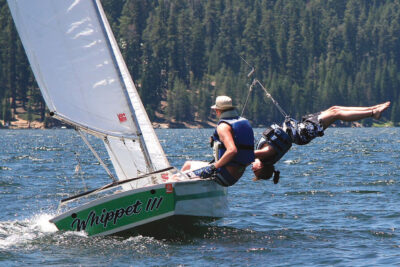
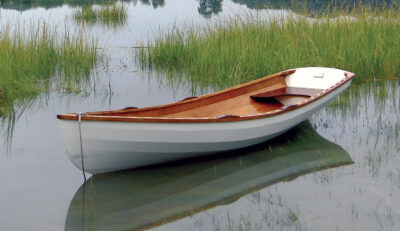
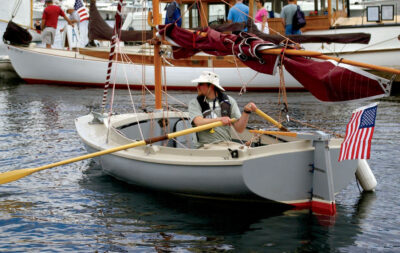
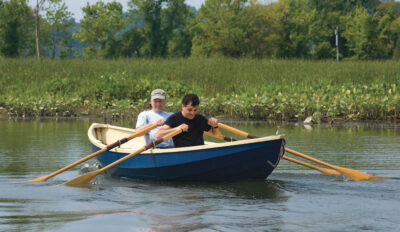
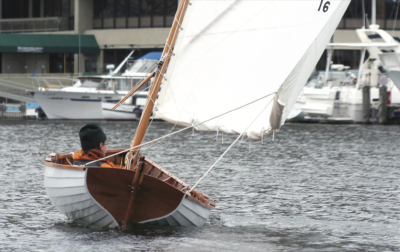
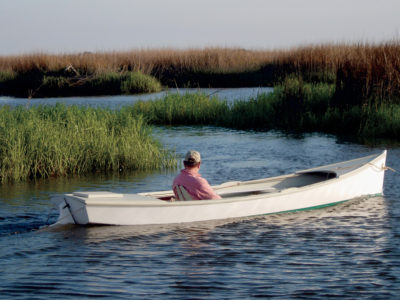
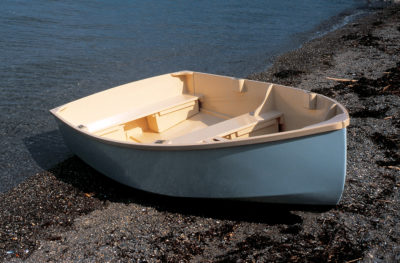


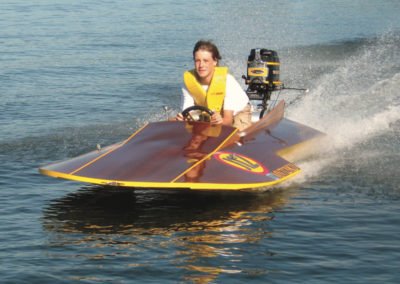
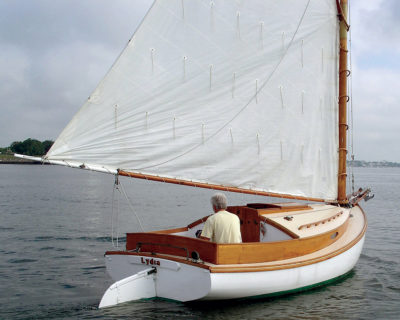
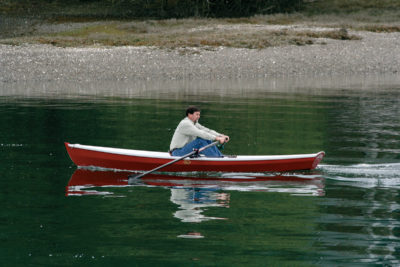
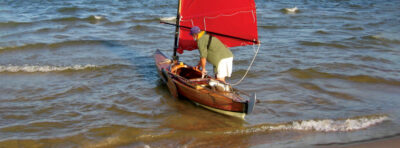
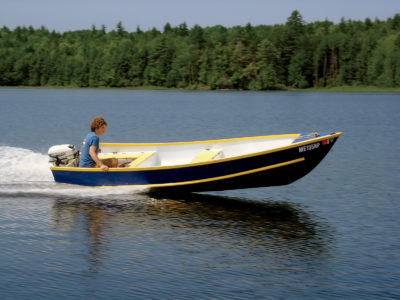
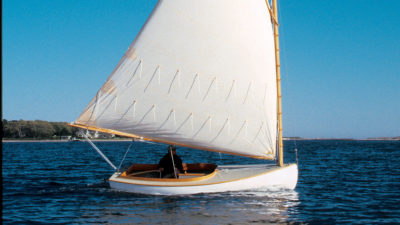
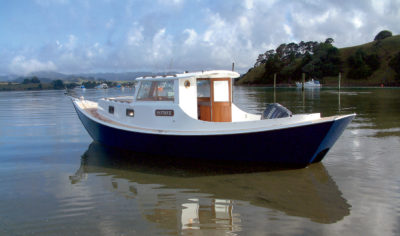

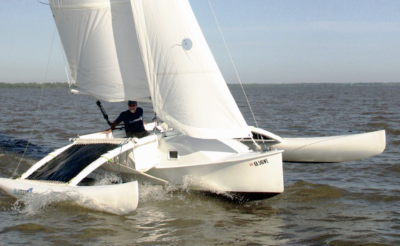
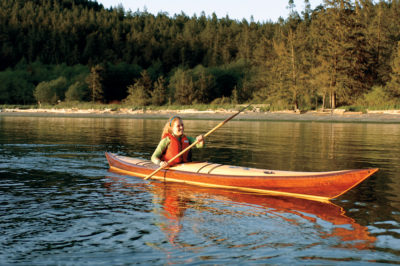
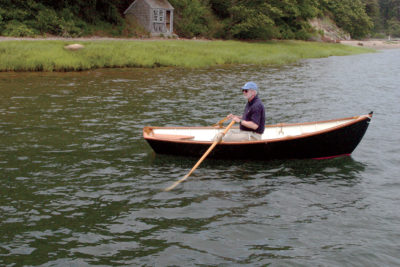
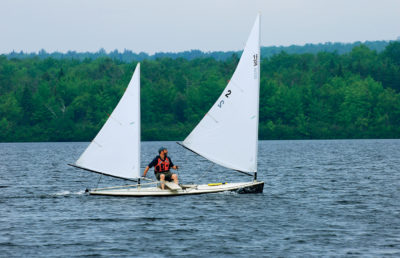
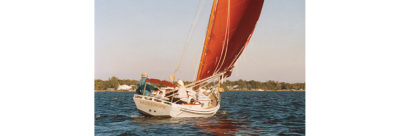

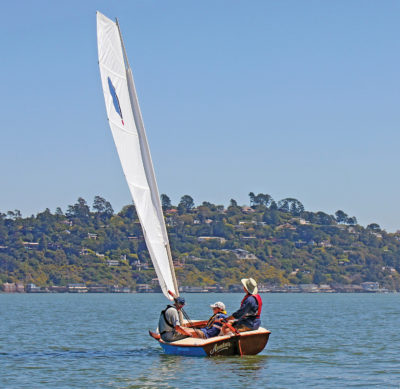
Lovely boat. What is the cost, if they are still being built?
Eric is still building his line of boats and for pricing you can reach him at the website, email address, or phone number listed at the end of the article above.
Eric is still building his line of boats and for pricing you can reach him at the website, email address, or phone number listed at the end of the article above.
—Ed.